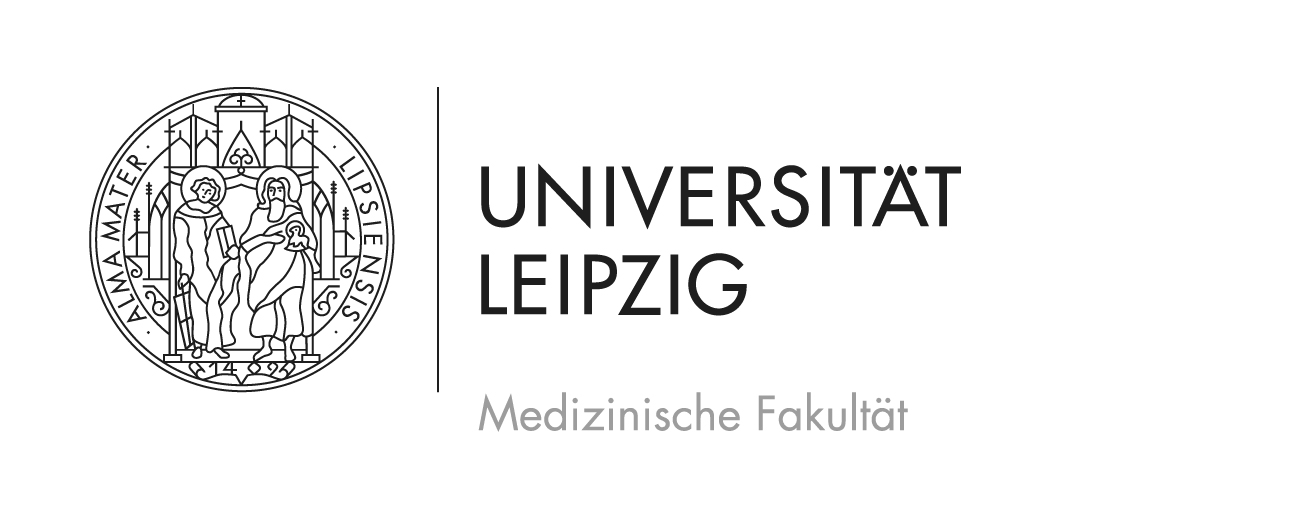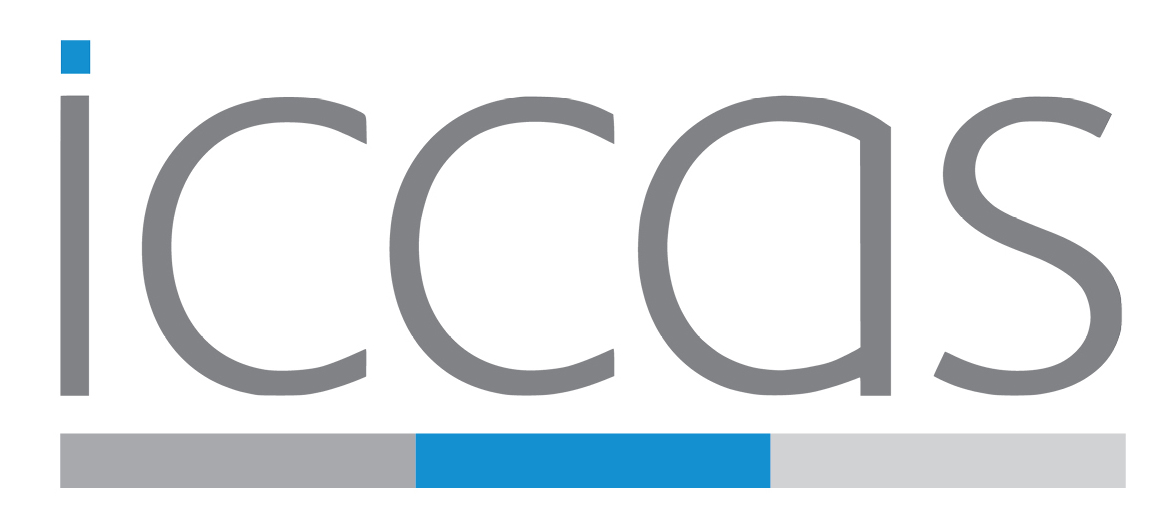05.04.2023
 SaxoCell
SaxoCell
In the SaxoCell Systems project, ICCAS is developing mechanisms for secure tracking of necessary resources (analog and digital) in the context of ATMP development (e.g., findings, cells, pharmaceutical materials, etc.) on the basis of formal process models. For this purpose, the involved assets are first defined in the form of interoperable (HL7 FHIR) resources. Then, these digital images are instantiated within an IT platform based on a blockchain infrastructure and compared to an ideal process model with the principles of Good Manufacturing Practice (GMP). In the context of the SaxoCell overall project, the resulting supply chain management solution is intended to enable seamless traceability for ATMP manufacturing processes in order to enable superior and sustainable quality management in all areas of the intended platform.
External project page: https://saxocell.de
 NFDI4 DataScience
NFDI4 DataScience
The vision of NFDI4DataScience (NFDI4DS) is to support all steps of the complex and interdisciplinary research data lifecycle, including collecting/creating, processing, analyzing, publishing, archiving, and reusing resources in Data Science and Artificial Intelligence.
The past years have seen a paradigm shift, with computational methods increasingly relying on data-driven and often deep learning-based approaches, leading to the establishment and ubiquity of Data Science as a discipline driven by advances in the field of Computer Science. Transparency, reproducibility and fairness have become crucial challenges for Data Science and Artificial Intelligence due to the complexity of contemporary Data Science methods, often relying on a combination of code, models and data used for training. NFDI4DS will promote fair and open research data infrastructures supporting all involved resources such as code, models, data, or publications through an integrated approach.
The overarching objective of NFDI4DS is the development, establishment, and sustainment of a national research data infrastructure for the Data Science and Artificial Intelligence community in Germany. This will also deliver benefits for a wider community requiring data analytics solutions, within the NFDI and beyond. The key idea is to work towards increasing the transparency, reproducibility and fairness of Data Science and Artificial Intelligence projects, by making all digital artifacts available, interlinking them, and offering innovative tools and services. Based on the reuse of these digital objects, this enables new and innovative research.
NFDI4DS intends to represent the Data Science and Artificial Intelligence community in academia, which is an interdisciplinary field rooted in Computer Science. We aim to reuse existing solutions and to collaborate closely with the other NFDI consortia and beyond. In the initial phase, NFDI4DS will focus on four Data Science intense application areas: language technology, biomedical sciences, information sciences and social sciences. The expertise available in NFDI4DS ensures that metadata standards are interoperable across domains and that new ways of dealing with digital objects arise.
 ScaDS.AI
ScaDS.AI
As one of the recently extended German centers for Artificial Intelligence (AI), ScaDS.AI aims to close the gap between efficient use of large amounts of data in both industry and research and advanced AI methods. For this purpose, the research topics at ScaDS.AI range from foundational AI methodology up to the application of AI in key areas like engineering, environmental systems, industry, and biomedical research, cooperating with many local companies and scientific institutions. Furthermore, increasing the public trust in AI is taken into consideration by integrating ethical and societal perspectives and making research available through the service center and Living Lab.
To push forward AI in the life sciences, ScaDS.AI cooperates with ICCAS by sharing research expertise and computing resources, focusing primarily on model-based, personalized cancer treatments.
 5G Compass
5G Compass
The goal of ICCAS in the 5G-COMPASS project is to integrate current and future communication technology into medical (-technical) care. To achieve this goal, both medical device manufacturers and communication technology manufacturers must be supported in the development of their products. In the project, a test hardware will be developed that allows medical device manufacturers to easily test different communication channels (Wi-Fi, Li-Fi, 5G) and thus verify the performance of their products. On the other hand, realistic data is provided to the communication technology over different channels, thus enabling testing of the communication technology in a realistic environment. To this end, the company draws on its many years of expertise in modeling
surgical interventions and process automation. On the level of communications engineering, ICCAS is a user of the communications technology, works closely with the partners from communications engineering in the project and contributes requirements and experience from the field of medical applications. Selectively, it collaborates on the development of algorithms and configurations where specific adaptations for the field of medical applications are necessary. On the medical technology side, there is intensive collaboration with the partners KLS-Martin and SurgiTAIX. The results are implemented and tested in the LivingLab of ICCAS.
 Tri5G
Tri5G
The Trimodal 5G (Tri5G) pioneer region stands for a 5G research and testing network in the northern region of Leipzig. The focus is on a wide variety of use cases with a focus on logistics and public supply, which are tailored to the requirements of industry and public services.
“Trimodal” stands for both the road, rail and air transport modes addressed in the project and the potential user groups of the technology to be researched from science, industry and public administration.
The Tri5G model region addresses the research, testing and standardization of 5G-based services in public mobile networks, tailored to the requirements of industry and public services for regional as well as supraregional logistics use cases. The goal is to create a 5G research and test network in the northern region of Leipzig, which is characterized by logistics traffic and automobile production. This network can be used to test and evaluate professional industrial as well as governmental 5G communication services in a public mobile radio infrastructure and under real conditions.
In Tri5G, a concept is to be developed to conceptually capture the future-oriented possibilities of 5G technologies mainly in the automotive industry, express logistics, value-added logistics and public transport in the vicinity of Leipzig Airport. In doing so, 5G use cases of different main users are to be combined in a unified network to avoid isolated solutions.
The 11 partners are investigating different use cases in the areas of Connected Driving, Automated Drones and Tracking, Monitoring, IoT & Maintenance.
The ICCAS task is to integrate a connected ambulance into a public mobile network and to explore the use of edge computing via 5G.
07.03.2023
 MediNET
MediNET
Digitization and interoperability for location and device-independent access to clinical data will be more firmly established in medicine. The greatest challenges at present are the lack of standardized, interoperable interfaces, the complexity of the clinical IT ecosystem, and the requirements posted by inevitable data protection and security measures.
In the MediNet project, the necessary interconnections between clinics, research and companies are being established. To this end, ICCAS runs a Transfer center to assist regional health care providers and companies with organizational and technical challenges when introducing novel products into the medical environment. Beyond that, ICCAS scientists are developing a technical platform that facilitates clinical studies and innovative treatment strategies with networked medical products. Based on established international standards and new technologies, the entire spectrum, ranging from mobile point of care devices to clinical information systems, can be addressed.
In cooperation with regional companies, the next generation of medical products will be integrated into clinical processes and digital infrastructures in the university hospital. This will also lay the foundation for new, more flexible solutions for location-independent, integrated medicine beyond the project period.
08.12.2022
 6G-Health
6G-Health
Overall project:
The 6G-Health project brings together the domains of communications engineering, medical engineering with medical and technical end users to enable precisely tailored technology development in the field of sixth-generation mobile communications (6G). This involves not only developing specific 6G technology components, but also identifying market entry barriers at an early stage and developing possible countermeasures. These include, above all, the aspects of licensing, operation and standardization. At the technical core are developments in the area of sensor integration in 6G, the development of technologies for enhanced network intelligence, and concepts and technologies for intelligent distribution of computing resources and efficient pre-processing of data at various levels of the infrastructure. From a medical perspective, representative applications from three areas will be addressed: The acquisition of biosignals directly at the patient and their transmission, the use and processing of data and information to improve a collaborative work environment, and applications of 6G in the field of Smart Hospital with the aim of recording and optimizing intraclinical processes.
Subproject – Leipzig University Medical Center:
Leipzig University Medical Center (UML) is developing ideas and concepts for the field of 6G research in medical technology applications. Technically, the main focus is on the investigation of application scenarios for the use of 6G technologies in clinical processes and their optimization. 6G can make a major contribution by providing a flexible, energy-efficient and high-performance infrastructure. The use of advanced sensor technology in clinics including the possibility of Joint Communication and Sensing (JCAS) as well as distributed processing intelligence opens up various advantages while significantly reducing power consumption. The medical applications addressed in the project are representative of different classes of medical applications. They are intended to highlight a wide range of future challenges and opportunities, which can be discussed with communication engineering experts via the 6G platform. In the project, the UML assumes the role of a mediator between the domains of medicine, communications engineering and medical engineering.Here, in the sense of a holistic understanding of the project, not only the technical applications are considered, but also the requirements for the future technologies through standardization and operation. To this end, the work is closely interlinked with players from the various domains and with experts from the areas of approval, operation, standardization and standardization.
30.11.2022
 CortexMap
CortexMap
The aim of the CortexMap project is the development of a novel navigated transcranial magnetic stimulation (nTMS) system for non-invasive pre- and post-surgical mapping of the motor cortex of the brain of patients with brain tumors. The new system is expected to offer an efficient use in neurosurgery and to be optimally integrated into the surgical workflow.
For this purpose, necessary hardware components as well as new software functionalities will be developed. An electromyography device with 8 or 16 electrodes for the measurement of motor evoked potentials (MEP) will enable faster and more precise examinations. Functionalities to automatically adjust the intensity of the stimulation and post-process the MEP will lead to accurate mapping of the motor cortex. New visualization and data analysis features will support the surgeons for the interpretation of the measurements too.
Therefore, the monitoring of patients before and after surgical treatment with this new non-invasive and simple measurement system, will become more efficient for the benefit of the patient.
22.11.2022
 SDC-VAS
SDC-VAS
The SDC-VAS research project aims to develop a new ‘distributed alarm system’ for use in intensive care units based on the new IEEE 11073 SDC standard family. The primary goal is to reduce alarm fatigue and noise pollution in intensive care units.
The SDC family of standards is a new communication protocol that allows for communication between medical devices from different manufacturers. In doing so, these devices can provide data, status and services in an electronic network. This information can also be used by so-called value-added systems.
The distributed alarm system should receive the information from the various SDC-enabled devices and aggregate and evaluate it together with data from other sources such as the clinical information system (CIS) and IoT sensors and then forward said information to the appropriate nursing staff. In addition, we propose to explore alarm prediction possibilities using pattern recognition algorithms.
The project faces three core challenges: First of all, an integrator able to meaningfully link the data from the SDC interface, from the CIS and from various IoT sensors needs to be developed. Secondly, a meaningful methodology to select and inform a suitable employee needs to be established. Finally, the question to what extent the legal and normative regulations have to change in order to be able to use an SDC-based distributed alarm system safely needs to be answered.
The project, which is a cooperation between the company tetronik, the University of Leipzig represented by ICCAS and the HTWK Leipzig, has started in August 2022 and is funded by the ZIM program of the Federal Ministry of Economics and Climate Protection.
22.09.2022
 3MP-FUS
3MP-FUS
Funding measure „Recognizing and treating mental and neurological diseases Using the potential of medical technology for a better quality of life“
| Project title: | 3MP-FUS: Multimodality Multi purpose Multi plattform Focused Ultrasound – “Neuromodulation in rare neuropsychiatric disorders with focused ultrasound. ” |
| Principal investigator: |
Prof. Andreas Melzer |
| Project budget:: |
Funding amount/donation for the MF/UL: 5.2 Mio € (6.2 Mio € including fixed rate) |
| Project duration: | 01.04.2022 bis 31.03.2025 |
| Project partner: |
|
Project description
Clinically available MRI-guided FUS systems (MRgFUS/MRHiFU) are dedicated and approved only for specific indications (not to the diseases mentioned) and are approved only for specific MRI systems. In addition, they are permanently installed in one single MRI scanner. Flexible and cost-effective use of these FUS systems on other MRI scanners is currently not possible, in contrast to the planned 3MP-FUS system. One System to be used both under Ultrasound guidance and MRI guidance is not yet available.
The objective of this project is to demonstrate feasibility of such a multi use FUS System which we have developed for neuromodulation.
Neurological diseases are often accompanied by focal changes in the brain. Therapy options mainly aim to normalize the altered brain function, e.g. by neuromodulation. Deep brain stimulation (DBS) is in use for this purpose. DBS requires neurosurgical invasive intervention with the possibility for complications. An alternative would be non-invasive electromagnetic stimulation techniques, such as transcranial magnetic stimulation (TMS). However, these have a low spatial focus without reaching the relevant deep structures of the brain.
The BMBF funded project 3MP-FUS aims to optimize the neuromodulation adressing the two orphan diseases Dystonie and young onset Parkinson’s syndrome. Both benefit from invasive DBS but face the disadvantages of invasiveness. Dystonia (incidence of 20:100,000 (ORPHA:68363)) is characterized by spontaneous involuntary muscle movements. This disorder is usually treated with medication; in advanced stages, therapy with DBS is indicated. The target region is the globus pallidus internus. DBS is also used in the rare early adult Parkinson’s syndrome with an incidence of 1.5:100,000 (ORPHA:2828), where the target region is usually the Nc. Subthalamicus.
The further goal of the project is the ongoing development and testing of a multi-modal, multi-parameter, platform-independent focused ultrasound system (3MP-FUS) for neuromodulation in dystonia and rare forms of Parkinson’s disease. 3MP-FUS will be integrated into different MRI and PET/MRI platforms for precise targeting of circumscribed brain regions and altering their function.
The approach proposed here has the potential to significantly improve neuromodulation. For brain research and novel therapy, the 3MP-FUS device will open up applications similar to and beyond TMS.




